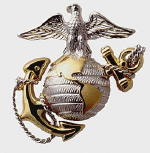Hobby Master HG4406 USMC LVT-2 'Water Buffalo' Amtank Amphibious Vehicle - Provisional Company, 193rd Tank Battalion, 27th Infantry Division, Makin Atoll, Gilbert Islands, November 1943 (1:72 Scale)
"Last week some 2,000 or 3,000 United States Marines, most of them now dead or wounded, gave the nation a name to stand beside those of Concord Bridge, the Bon Homme Richard, the Alamo, Little Big Horn, and Belleau Wood. The name was Tarawa."
- Robert Sherrod, Time Magazine War Correspondent embedded with the US Marines, December 6th, 1943
 The Landing Vehicle Tracked (LVT) was a class of amphibious vehicles introduced by the United States Navy, Marine Corps and Army during World War II. Originally intended solely as cargo carriers for ship to shore operations, they rapidly evolved into assault troop and fire support vehicles as well. The types were all widely known as amphtrack, amtrak, amtrac etc., a portmanteau of amphibious tractor.
The Landing Vehicle Tracked (LVT) was a class of amphibious vehicles introduced by the United States Navy, Marine Corps and Army during World War II. Originally intended solely as cargo carriers for ship to shore operations, they rapidly evolved into assault troop and fire support vehicles as well. The types were all widely known as amphtrack, amtrak, amtrac etc., a portmanteau of amphibious tractor.
After much deliberation, it was determined that amphibious tracked vehicles were the only solution to this problem. Both the amtrac and the amtank were developed, designed to be able to climb onto a reef from the sea then advance across the rough coral to the beach without exposing the troops inside to small arms fire. The amtracs were responsible for transporting troops ashore where they could continue the assault. The amtanks, on the hand, led the way, firing at the enemy positions the moment naval gunfire and air strikes lifted.
Based on the LVT-2, the LVT(A)-1 fire support version had an armored (6 to 12 mm) hull. It was fitted with a turret nearly identical to that of the Light Tank M3, with a 37 mm Gun M6 in an M44 mount, and also carried two rear-mounted machine guns. 510 units produced.
Pictured here is a 1:72 scale replica of a USMC LVT-2 'Water Buffalo' Amtank Amphibious Vehicle which saw action at the Battle of Makin, Gilbert Islands, fought during November 1943.
Sold Out!
Dimensions:
Length: 4-1/4-inches
Width: 1-3/4-inches
Release Date: December 2012
Historical Account: "Minor Conquest" - The Battle of Makin was a battle of the Pacific campaign of World War II, fought from November 20th to 24th, 1943, on Makin Atoll in the Gilbert Islands.
Air operations against Makin began on November, 13th with USAAF B-24 bombers of the Seventh Air Force from the Ellice Islands. Grumman FM-1 "Wildcat" fighters escorted Douglas SBD "Dauntless" dive bombers and Grumman TBF "Avengers" from escort carriers USS Liscome Bay, USS Coral Sea and USS Corregidor; followed by 8-inch (200 mm) support guns from fire support ship USS Minneapolis and other war vessels. Troops began to go ashore at two beaches at 08:30 on November 20th.
The initial landings on RED Beach went according to plan with the assault troops moving rapidly inland after an uneventful trip on the ocean side of the island. Their progress off the beach was slowed only by an occasional sniper and the need to negotiate their way around the debris and water-filled craters left by the air and naval bombardment. The craters in particular stymied tank support of the Red Beach forces by the light tanks of the 193rd Tank Battalion when the lead M3 light tank became partially submerged in a shellhole and blocked passage of all the vehicles behind it.
As the landing craft approached YELLOW Beach from the lagoon, they began to receive small-arms and machine-gun fire from the island's defenders. The assault troops were also surprised to learn that even though they were approaching the beach at high tide as planned, a miscalculation of the depth of the lagoon caused their small boats to go aground, forcing them to cover the final 250 yards (230 m) to the beach in waist-deep water. Although equipment and weapons were lost or water-soaked, only three men were killed approaching the beach, mainly because the defenders had elected to make their final stand not at the waterline, but farther inland along the tank barriers.
The invasion plan was conceived in the hope of luring the enemy into committing most of its forces to oppose the first landings on RED Beach and thereby allow the troops landing on YELLOW Beach to attack from the rear. The enemy however, did not respond to the attack on RED Beach and withdrew from YELLOW Beach with only harassing fires, leaving the troops of the 27th Division no choice but to knock out the fortified strongpoints one by one. Reduction operations were hampered by the frequent inability to use heavy support weapons, including tanks, because of the danger of cross-fire. The regimental commander of the 165th Infantry, Col. Gardiner Conroy, was killed in action by Japanese sniper fire on the afternoon of the first day and was succeeded in command by Col. Gerard W. Kelley.


